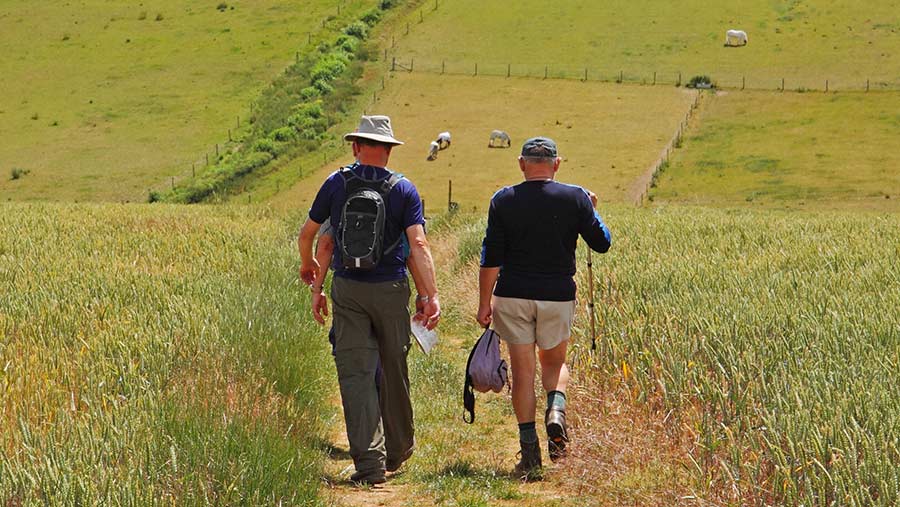Opinion: Public access to open spaces should not be a right
 © Chris Lofty/Adobe Stock
© Chris Lofty/Adobe Stock During my local government career, the nearest I came to being lynched was at a village hall meeting about a proposed footpath diversion, so I know that feelings about rights of way can run high. Even so, I’ve been astounded by things I’ve discovered recently.
I was searching online to see if the Agnew review of public access to open land would have implications for the farm.
The review was commissioned by the Treasury last year with the aim of coming up with radical proposals for public engagement with nature.
But its findings are not now going to be released – instead they will inform government decisions on how to improve access to green spaces.
See also: Farming near footpaths – the law for arable farmers
This news has dismayed “right-to-roam” campaigners, who were hoping for a recommendation that the access currently permitted over certain open areas in England would be extended to all rivers, woods and green belt land.
My research unearthed articles that portray landowners as evil and promote trespassing as a legitimate way for the dispossessed masses to reclaim what was “stolen” from them centuries ago.
There are even books telling you how to do it.
Do many people actually want increased access, or is it another example of a sanctimonious minority trying to impose their views on the rest of us?
I frequently go walking in the English countryside. I think we’re fortunate to have the extensive rights-of-way network, and the great majority of paths I walk are well signed and in good condition.
Personally, I don’t feel the need for more “rights” over private land.
I’m also concerned because the current fashionable view seems to be that the dominant purpose of rural areas is as a resource for the benefit of urban dwellers’ “wellbeing”, outweighing any detriment to wildlife, livestock and the people who live and work there.
At the farm in the Lake District, seeing people and dogs roaming around where they shouldn’t be certainly doesn’t enhance our wellbeing.
Campaigners must have more faith in human nature than I do, because I have experienced first-hand plenty of examples of selfish, ignorant or downright malicious behaviour from folk out “enjoying” the countryside.
It won’t help if you tell people they have a “right”, then qualify it with exceptions.
I thought the “right to roam” existed in Scotland, but it turns out it is a “right of responsible access” with various restrictions – which have generated the inevitable court cases over how to interpret them.
When there are good reasons for some areas to be out of bounds, I really don’t mind being excluded.
Even the most respectful walkers can disturb wildlife and it takes just one clown with a disposable barbecue to wreak havoc.
The pressure for increased access that will arise in response to Defra’s “public money for public goods” approach must be resisted, where habitats that are meant to be enhanced will instead be degraded by letting people and their dogs loose in them.
Before activists insist on landowners being forced to grant access, I think it only fair that they find out for themselves what it’s like to be custodians of the countryside.
I suggest they acquire some land – preferably near an urban area, where it’s most needed – plant some trees, maybe do a spot of “rewilding”, place no restrictions on entry to it, and see whether they find the experience an unalloyed delight.

